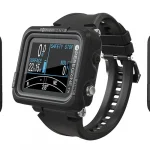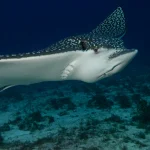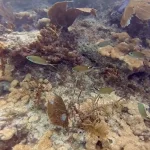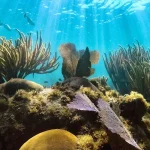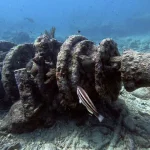Table of Contents
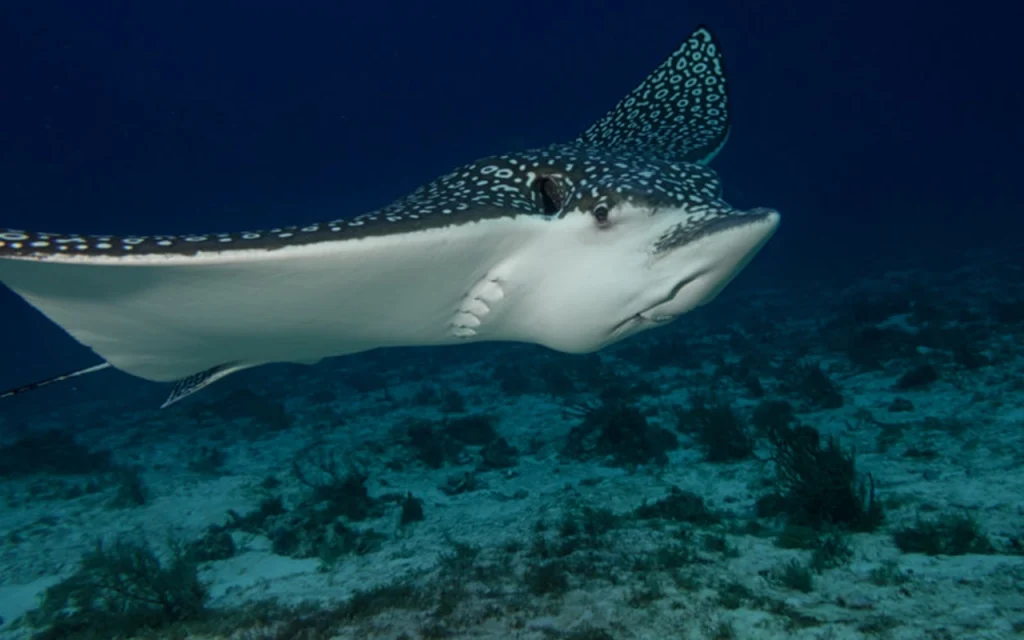
Eagle Ray Alley provides an engaging dive experience for divers of all skill levels, making it an excellent choice for both beginners and seasoned enthusiasts.
Article at a Glance
- Location: Eagle Ray Alley is situated in Key Largo, Florida, within the Florida Keys National Marine Sanctuary.
- Depth: The dive site features depths ranging from 20 to 30 feet (approximately 6 to 13 meters), making it accessible for divers of all skill levels.
- Visibility: Divers can typically expect excellent visibility, often reaching up to 16 meters (52 feet), enhancing the underwater experience.
- Marine Life: The site is known for its diverse marine life, including eagle rays, yellow-headed jawfish, stingrays, and moray eels.
- Suitable for All Levels: Eagle Ray Alley is ideal for both beginners and advanced divers, offering training opportunities and engaging exploration.
- Best Time to Dive: Optimal diving conditions are generally found from April to Juneand in August, with early morning dives providing the best chances for marine sightings.
- Conservation Efforts: The site is part of ongoing conservation initiatives aimed at preserving the unique marine ecosystems of the Florida Keys.
Eagle Ray Alley Key Largo
Eagle Ray Alley is a notable dive site located within Molasses Reef in Key Largo, Florida. It is recognized for its rich marine biodiversity and is particularly famous for sightings of eagle rays.
Overview of Eagle Ray Alley
- Location: Situated approximately 6 miles off the coast of Key Largo, Eagle Ray Alley is accessible by boat and is part of the larger Molasses Reef system.
- Depth: The site features depths ranging from about 20 to 60 feet, making it suitable for divers of various skill levels.
Diving Experience
- Marine Life: Divers frequently encounter a variety of marine species, including colorful tropical fish, sea turtles, and, notably, eagle rays. The area is known for its clear visibility, often exceeding 60 feet.
- Site Features: The dive site consists of a sand channel that runs seaward, providing a unique underwater landscape. It is characterized by coral formations and several pass-throughs that enhance the diving experience.
Accessibility and Conditions
- Access: Eagle Ray Alley is primarily accessed via dive boats from local dive centers in Key Largo. The site is popular among both scuba divers and snorkelers due to its relatively shallow depths and vibrant marine life.
- Conditions: The water temperature typically hovers around 82°F, making it comfortable for year-round diving. The site generally experiences calm seas, contributing to favorable diving conditions.
What Marine Life Can I Expect To See?
Marine Life You Can Expect
- Eagle Rays: True to its name, eagle rays are commonly spotted gliding through the waters, although sightings are not guaranteed.
- Yellow Headed Jawfish: These small, colorful fish often inhabit sandy areas and can be seen peeking out of their burrows.
- Stingrays: Frequently found along the sandy channel, these rays are known for their graceful movements.
- Scorpionfish: Masters of camouflage, scorpionfish can be spotted resting on the ocean floor among rocks and corals.
- Spotted Drums: Look under ledges and coral formations to find these striking fish, known for their distinct coloration.
- Moray Eels: Both spotted and green morays may be hiding in crevices and undercuts, offering a thrilling sight for divers.
- Glassy Sweepers: These small schooling fish are often seen darting around coral structures.
Additional Species
- Sea Turtles: Loggerhead and green turtles occasionally visit the area, adding to the variety of wildlife you might encounter.
- Various Tropical Fish: Expect to see a plethora of colorful reef fish, including parrotfish and snapper, which contribute to the vibrant underwater scenery.
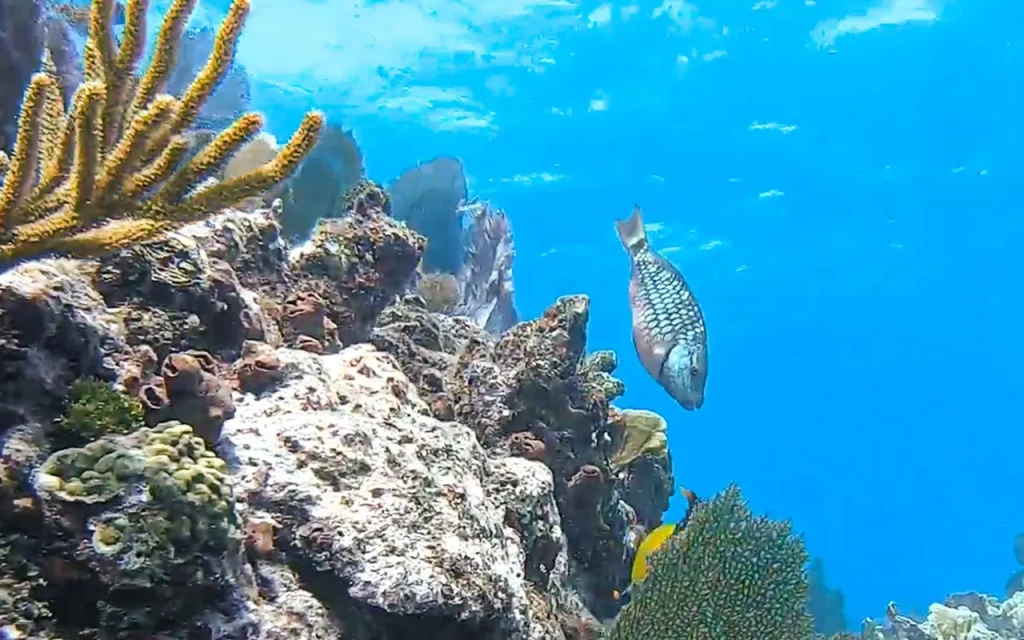
What Do Divers Say About This Site?
General Impressions
- Accessibility: Many divers appreciate that Eagle Ray Alley is suitable for all skill levels, making it an excellent choice for beginners as well as seasoned divers looking for a relaxed dive experience. The site features a maximum depth of around 13 meters (approximately 43 feet), which is manageable for most.
- Visibility: Divers frequently mention the good visibility, often reaching up to 16 meters (about 52 feet), allowing for an immersive experience in the vibrant underwater environment.
Marine Life Encounters
- Eagle Rays: As the name suggests, eagle rays are a highlight of the dive. While sightings are not guaranteed, many divers report spotting these graceful creatures gliding through the waters, which adds excitement to the dive.
- Diverse Ecosystem: Reviews often note the variety of marine life, including yellow-headed jawfish, stingrays, scorpionfish, and various reef fish. The presence of deep undercuts and coral ledges provides habitats for many species, enhancing the overall diving experience.
Dive Conditions
- Current: Some divers have pointed out that the site can experience currents, which may require caution, especially for less experienced divers. However, many find the conditions manageable and conducive to enjoyable dives.
- Training Site: The site is also popular for Open Water training due to its shallow depths and rich marine life, making it ideal for practicing skills while enjoying the underwater scenery.
Overall Experience
- Memorable Dives: Many divers express that Eagle Ray Alley is worth revisiting due to its beauty and the potential for unique encounters with marine life. The combination of stunning coral formations and diverse species makes it a memorable destination.
Key Information
| Category | Details |
|---|---|
| Location | Key Largo, Florida, part of the Florida Keys National Marine Sanctuary |
| Depth | 20 to 30 feet (approximately 6 to 13 meters) |
| Visibility | Typically 60 feet (approximately 16 meters) |
| Marine Life | Eagle rays, yellow-headed jawfish, stingrays, scorpionfish, moray eels, sea turtles |
| Key Features | Sandy channel, coral ledges, high relief formations |
| Accessibility | Suitable for divers of all skill levels |
| Best Time to Dive | Early morning for optimal conditions and marine activity |
| Photography Tips | Use natural light, stabilize your camera, respect wildlife, and practice composition techniques |
| Conservation Efforts | Part of the Florida Keys National Marine Sanctuary; various coral restoration initiatives |
| Training Opportunities | Ideal site for Open Water training and skill development |
Highlights of Diving This Site?
Highlights of Diving Eagle Ray Alley
- Diverse Marine Life: The site is home to a variety of species, including:
- Eagle Rays: Known for their graceful movements, these rays are often seen gliding through the waters, though sightings are not guaranteed.
- Yellow Headed Jawfish: These colorful fish can be spotted peeking out from their sandy burrows.
- Stingrays and Scorpionfish: Commonly found in the sandy areas and among coral formations, adding to the site’s biodiversity.
- Spotted Drums and Moray Eels: Often hiding under ledges and in crevices, these species contribute to the rich marine life divers can encounter.
- Unique Underwater Features: The site features:
- A sand channel that runs seaward from Molasses Shallow to Logan’s Run, flanked by high relief coral ledges with deep undercuts. These structures provide shelter for various marine species.
- Depths ranging from 20 to 30 feet, making it ideal for both novice and experienced divers. The shallow nature allows for extended dives without excessive nitrogen absorption concerns.
- Visibility and Conditions: Divers often report excellent visibility, typically around 16 meters (52 feet), which enhances the overall diving experience. However, some current may be present, requiring attention from divers.
- Training Opportunities: Eagle Ray Alley is frequently used for Open Water training due to its manageable conditions and diverse marine life, making it an excellent spot for new divers to gain experience while enjoying the underwater scenery.
- Photographic Opportunities: The vibrant colors of the marine life and coral formations make this site a favorite among underwater photographers looking to capture stunning images of the ecosystem.
My Favorite Dive Computers
I have compared the 3 top diving computers for each category to help making the right choice easier:
Iconic Spots At This Site
Iconic Spots at Eagle Ray Alley
- Sandy Channel: The main feature of Eagle Ray Alley is its expansive sandy channel that runs seaward from Molasses Shallow to Logan’s Run. This channel is flanked by high relief coral ledges, creating a stunning underwater landscape.
- Coral Ledges and Undercuts: The coral formations on either side of the sandy channel provide deep undercuts that serve as habitats for various marine species. These structures are ideal for spotting a variety of fish, including:
- Yellow Headed Jawfish
- Spotted Drums
- Moray Eels
- Eagle Ray Sightings: True to its name, Eagle Ray Alley is known for the occasional sighting of eagle rays gracefully gliding through the waters. While sightings are not guaranteed, divers often report memorable encounters with these majestic creatures.
- Marine Biodiversity: The site is rich in marine life, including:
- Stingrays: Frequently seen resting on the sandy bottom.
- Scorpionfish: Camouflaged among the coral and rocks.
- Glassy Sweepers: Small schooling fish that add to the vibrant underwater scenery.
- Ideal for Training: Due to its shallow depths (20 to 30 feet) and diverse marine life, Eagle Ray Alley is often used for Open Water training, making it an iconic spot for new divers to gain experience in a beautiful setting.
Environmental Conservation Efforts
Florida Keys National Marine Sanctuary
The Florida Keys National Marine Sanctuary encompasses 3,800 square miles of waters around the Florida Keys, including the waters off Key Largo. This sanctuary:
- Protects diverse underwater habitats, including the only coral barrier reef in the continental United States
- Provides a home for over 6,000 animal species
- Implements regulations to safeguard marine life and historical resources
Coral Reef Restoration
Several organizations are actively working on coral reef restoration:
- Mote Marine Laboratory: Operates a land-based coral nursery in Key Largo that can host up to 20,000 coral fragments. They focus on resilience-based restoration efforts on local reefs such as Carysfort, Grecian Rocks, and French Reef.
- Ocean Conservation Foundation: Partners with local dive operators to expedite coral restoration work. Their professional dive staff can plant hundreds of corals in a single afternoon, significantly accelerating restoration efforts.
Research and Education
- Ocean First Institute: Established a research facility in Key Largo to conduct conservation-minded research on endangered species and impacted habitats.
- REEF Environmental Education Foundation: Operates a campus in Key Largo that serves as a visitor and nature center, educating the public about marine resources and ocean conservation.
Sustainable Tourism Practices
- Local dive operators, such as Rainbow Reef Dive Center, have implemented eco-friendly practices including:
- Eliminating single-use plastic water bottles on their boats
- Requiring the use of reef-safe sunscreen
- Providing education on coral conservation and marine debris to divers
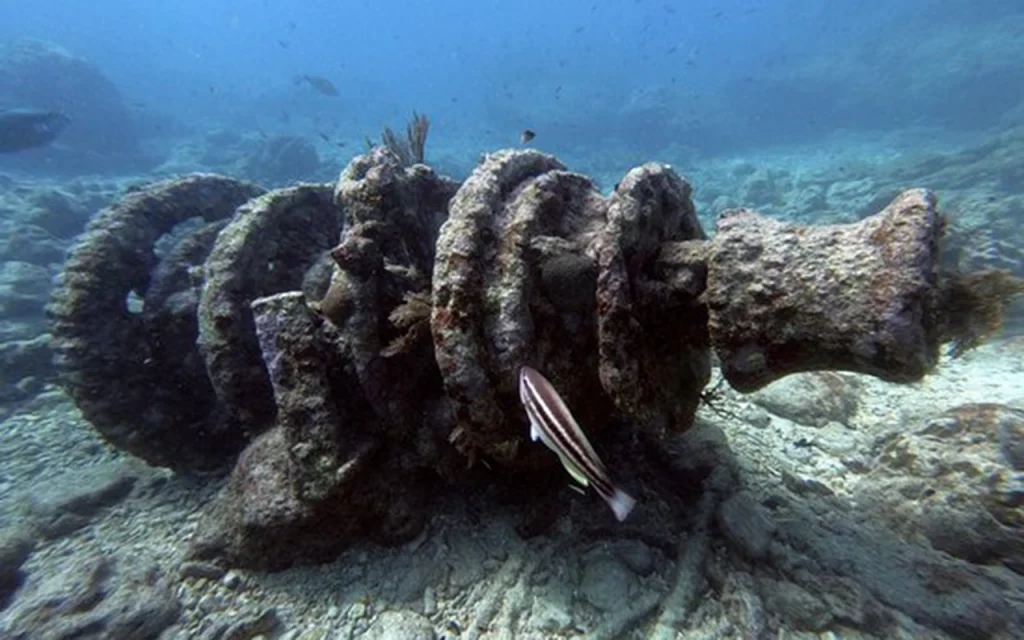
Maximizing Your Diving Experience
Key Features of Eagle Ray Alley
- Expansive Sandy Channel: The site features a large sandy channel that runs from Molasses Shallow to Logan’s Run, flanked by high relief coral ledges. This unique structure provides a habitat for diverse marine life.
- Depth and Visibility: With a maximum depth of around 13 meters (approximately 43 feet) and visibility often reaching 16 meters (52 feet), divers can enjoy clear views of the underwater ecosystem.
- Marine Life: Expect to see a variety of species including:
- Eagle Rays: While sightings are not guaranteed, they are a highlight for many divers.
- Yellow Headed Jawfish, Stingrays, and Scorpionfish: These species can often be found among the coral ledges and sandy areas.
- Moray Eels and Glassy Sweepers: Look under ledges for these fascinating creatures.
Tips for Maximizing Your Dive
- Plan Your Dive: Check current conditions before diving. The site can experience some current, so it’s essential to be aware of this, especially for less experienced divers.
- Timing: Early morning dives may offer the best conditions and increased chances of seeing eagle rays as they are often more active during this time.
- Equipment Check: Ensure you have appropriate gear, including reef-safe sunscreen to protect the environment. A dive camera is also recommended to capture the vibrant marine life.
- Stay Aware: Keep an eye on your surroundings. Many marine species can be elusive, so being observant increases your chances of spotting them.
- Respect the Environment: Follow all conservation guidelines, such as not touching or disturbing marine life. This helps preserve the delicate ecosystem for future divers.
Training Opportunities
Eagle Ray Alley is also an excellent site for Open Water training due to its manageable depths and conditions. If you’re new to diving, consider taking advantage of this opportunity to gain experience in a stunning environment.
Capturing Memories at Eagle Ray Alley: Photography Tips
Photography Tips for Eagle Ray Alley
- Use Natural Light:
- Avoid using flash as it can disturb marine life and create unwanted reflections. Instead, rely on natural light, especially during midday when sunlight penetrates the water effectively.
- Choose the Right Equipment:
- A wide-angle lens is ideal for capturing larger subjects like eagle rays and expansive coral formations. For smaller creatures, a macro lens can help you get detailed shots of colorful fish and corals.
- Ensure your camera is in a waterproof housing to protect it from saltwater damage.
- Stabilize Your Camera:
- Maintain good buoyancy control to avoid stirring up sediment, which can reduce visibility in your shots. Consider using a camera strap or lanyard to prevent dropping your gear.
- Composition Techniques:
- Use the Rule of Thirds to create balanced and engaging images. Position key subjects off-center for a more dynamic composition.
- Experiment with over-under shots (half above and half below water) to capture both the surface and underwater scenes. This technique often requires patience and practice but can yield stunning results.
- Be Patient:
- Spend time observing marine life before shooting. This patience can lead to unique moments, such as an eagle ray gliding by or a turtle surfacing for air. Wait for the right moment to capture these encounters.
- Respect Marine Life:
- Maintain a respectful distance from wildlife to avoid stressing them. This not only ensures better behavior from the animals but also helps preserve their natural habitat.
- Post-Dive Care:
- After your dive, rinse your camera gear with fresh water to remove salt and sand, which can cause damage over time. Store your equipment in a cool, dry place.
Frequently Asked Questions
When is the best time to dive Eagle Ray Alley?
Optimal Months:April to June: These months typically offer the best diving conditions with warmer water temperatures (around 26-28°C) and good visibility (up to 25 meters). Currents are generally mild, making for enjoyable dives.
August: While it can be humid, visibility remains good, and the water temperature is at its warmest (up to 29°C) during this month.
Visibility:Visibility is generally excellent year-round, often exceeding 16 meters (approximately 52 feet), which enhances the diving experience.
Current Conditions:The current can vary; it’s usually mild (0-2 knots) during optimal months, but can increase in late fall and winter.
Marine Life Activity:Early mornings are particularly good for spotting eagle rays as they are more active during this time. Additionally, the summer months can offer sightings of various marine species, including turtles and sharks.
Weather Considerations:The wet season runs from May to October, peaking in August. While diving is possible year-round, it’s advisable to check weather forecasts and dive conditions before planning your trip.
What is the visibility like while diving Eagle Ray Valley?
Typical Visibility: The visibility at Eagle Ray Alley is generally excellent, often reaching:16 meters (approximately 52 feet)
Up to 25 meters (about 82 feet) during optimal conditions
Seasonal Variations:Best visibility is typically from April to August
March to July consistently shows visibility around 25 meters
November may have reduced visibility, sometimes as low as 10 meters
Factors Affecting Visibility:The site’s shallow depth (20-30 feet) contributes to good visibility
Currents can affect visibility, but they are generally mild in this area
Comparison to Other Sites:Eagle Ray Alley’s visibility is considered good compared to many other dive sites in the Florida Keys
Diver Experiences:Many divers report “good visibility” in their reviews of the site
The clear water enhances the chances of spotting marine life, including the namesake eagle rays
Best Time for Visibility:Early morning dives often offer the best visibility conditions
How deep are the dives at Eagle Ray Alley?
Dives at Eagle Ray Alley typically range in depth from 20 to 30 feet (approximately 6 to 13 meters). This shallow depth makes it an excellent site for divers of all skill levels, including beginners. The maximum depth reported is around 13 meters.
The site features a sandy channel flanked by coral ledges, providing a rich environment for marine life while remaining accessible and safe for divers.
Is Eagle Ray Alley suitable for beginners?
Yes, Eagle Ray Alley is suitable for beginners. Here are some key points supporting this:Shallow Depth: The site has a maximum depth of about 13 meters (approximately 43 feet), making it accessible and safe for novice divers.
Diverse Marine Life: Beginners can enjoy a rich underwater experience, with opportunities to see eagle rays, yellow-headed jawfish, stingrays, and various other species in a vibrant ecosystem.
Training Opportunities: Eagle Ray Alley is often used for Open Water training due to its manageable conditions and the presence of experienced divemasters who can provide guidance.
Good Visibility: The visibility often reaches around 16 meters (52 feet), allowing beginners to fully appreciate the underwater environment without feeling overwhelmed.
Is Eagle Ray Alley suitable for advanced divers?
Eagle Ray Alley is suitable for advanced divers, although it is primarily known as a beginner-friendly site. Here are some key points regarding its suitability for advanced divers:
Key Points for Advanced Divers
Depth and Structure: The site has a maximum depth of about 13 meters (43 feet), which may not present significant challenges for advanced divers. However, the presence of high relief coral ledges and deep undercuts can provide interesting exploration opportunities.
Marine Life: Advanced divers may appreciate the chance to encounter diverse marine species, including eagle rays, stingrays, and various reef fish. The potential for spotting larger or more elusive species can add excitement to the dive.
Current Conditions: While generally mild, the site can experience some current. Advanced divers may find this aspect engaging, as it allows for drift diving opportunities and navigating through different underwater environments.
Exploration Opportunities: The unique underwater landscape with its sandy channels and coral formations offers advanced divers the chance to explore and utilize their skills in navigation and buoyancy control.
Training and Instruction: Some advanced divers may choose to use Eagle Ray Alley for training purposes or as a site for skill refreshers, particularly in Open Water courses or advanced diving techniques.

